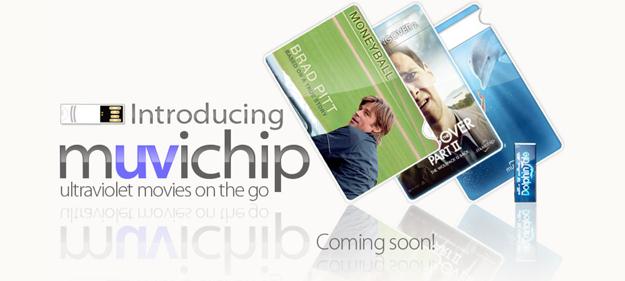 Say, for a second, that you have made the decision that you agree that the digital format is the future of movies – especially when it comes to home viewing – but you’re not quite ready for whatever reason to sign on to the idea of streaming content directly to your laptop or television just yet. What avenues are left open to you? Well, there’s DVD and Blu-ray… But those formats are problematic both in terms of size, and also the possibility of the discs being scratched or harmed in some way. There’s always downloading something permanently via iTunes, Amazon or some other website that sells content… but then you own it, and it’s so much more expensive. If only there was some kind of middle ground…
Say, for a second, that you have made the decision that you agree that the digital format is the future of movies – especially when it comes to home viewing – but you’re not quite ready for whatever reason to sign on to the idea of streaming content directly to your laptop or television just yet. What avenues are left open to you? Well, there’s DVD and Blu-ray… But those formats are problematic both in terms of size, and also the possibility of the discs being scratched or harmed in some way. There’s always downloading something permanently via iTunes, Amazon or some other website that sells content… but then you own it, and it’s so much more expensive. If only there was some kind of middle ground…
The above must have been something along the lines of the thought process behind the creation of FlixChip Corp., a company based in California that has based its entire business model around the notion that there’s a potential market out there for people who want to watch movies that come on a pre-loaded USB drive instead of streaming, downloading or watching them from disc. The USB drive in question is called a “muvichip” by the company, and it’s a solid-state device that contains not just a file for the movie itself, but also for special features to support the main feature.
Interestingly, FlixChip hasn’t altogether abandoned the idea of streaming content; the company has also created what it called muvifi, which is a portable player for the muvichip that will stream content to any wi-fi enabled device within a certain radius, with up to five different devices able to view content from the chip simultaneously.
“The time is definitely now for the launch of filmed entertainment on the USB platform,” says FlixChip founder and Chief Executive Officer, John Strisower. “The key thing is that the customer already owns the hardware they need for muvichip playback and muvifi local streaming, and they already know how to use it. Along with hard media, VOD and other digital delivery systems, muvichip promises to be the next major content delivery platform.”
I’m not entirely sure that Strisower is being anything other than overly optimistic here. Sure, the mulvichip system is compatible with the operating systems (iOS, Windows, OS X and Android) that you’d expect, and yes, it’s also using the UltraViolet distribution and digital rights system that you’d expect it to, but yet: Isn’t the age of the USB chip nearing an end, as everything moves towards cloud storage and sharing? I feel like this is an idea that would have been in the zeitgeist two or three years ago, but now seems curiously old-fashoned. Of course, I’ve been wrong before…
Editors' Recommendations
- Implantable payment chips: The future, or cyberpunk pipe dream?
- This groundbreaking bionic eye system restores lost vision with a retina chip


